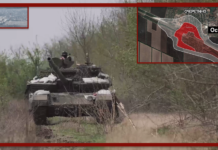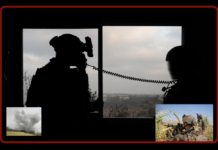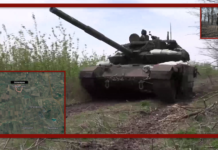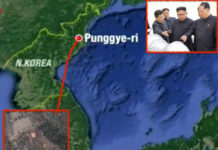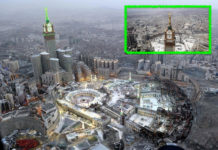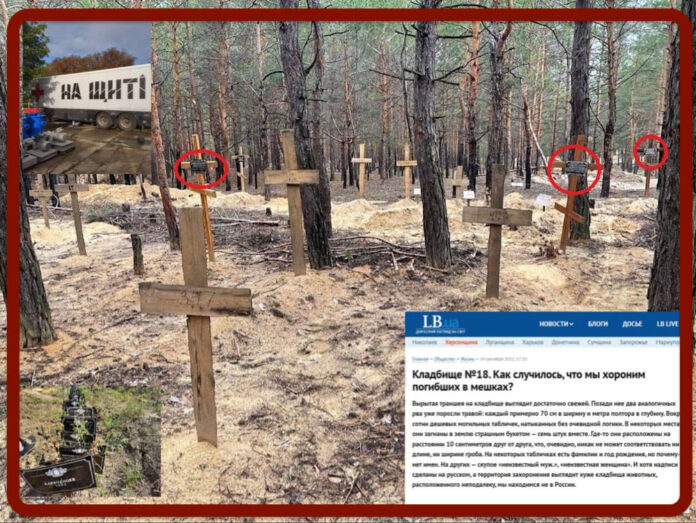
With the Russian-Ukrainian conflict, not even the dead can rest in peace. Not only are the countries of the Baltic republics and north-eastern Europe witnessing the removal of Russian cemeteries from the Second World War, there is also the sadness of removing dignity from the dead of today: Ukrainian journalists have uncovered a cemetery in the south of Kharkiv, where homeless people were buried before the Russian operation.
According to the journalists (see photo), the area of the cemetery has increased several times over the past six months. Among the recent graves were members of the Ukrainian armed forces and militiamen who were killed during the invasion, who have no relatives or who did not have time to be taken from the morgues. We could say: dead and buried while fighting.
As stated by Ukrainian journalists, the reason for initiating the investigation was the appeal of relatives of militiamen or soldiers of the regional battalions, who were killed in battle on 1 March in the Kharkov regional administration building. Judging from the documents that emerged from the investigation, not only are all of them buried in Kharkov, but they were buried with military rites.
Investigations are currently underway. The same scene is now repeated in Izyum where wooden crosses have appeared in the steppe. The Ukrainian military speaks of mass extermination by Russian military forces. While the Russians claim that these are soldiers killed in battle.
Ukrainian Prime Minister Zelensky accused Russian troops of killing civilians in Izyum, whose graves were discovered by the Ukrainian military when they arrived in the city. The Russians claimed that the Ukrainians had killed civilians in Izyum who were considered collaborators with the Russians.
Photos of cemeteries in the forest appeared on the social sphere. The Russians in response to the accusations of the Ukrainians reported that very often it is the Ukrainian soldiers themselves who prevent the handing over of the corpses of the deceased soldiers. As in the case of Major Kovalenko of the Ukrainian Air Force, whose body the LPR militia tried to return to his relatives, however, due to the SBU’s threats to the pilot’s relatives, negotiations had to be broken off and the remains buried. Ukrainian law, needless to say, makes a difference between the ‘disappeared in war’ and the ‘dead in war’. For the ‘disappeared’, no compensation has to be paid to relatives.
Another contingent problem solved with spontaneous cemeteries was the overcrowding of morgues. This happened in Kherson and is happening in Izyum. During the fighting, the dead at the front were buried immediately otherwise there was a risk of having corpses at the side of the fighting soldiers.
The Russians are complaining on the social sphere: now the ‘new Bucha’ begins. The human rights monitoring mission in Ukraine wants to go to Izyum. “Members of the Human Rights Monitoring Mission to Ukraine will visit Izyum,” said the representative of the Office of the UN High Commissioner for Human Rights, Elizabeth Trossell.
According to the representative, the commission decided to go to the temporarily controlled town because of the alleged mass graves. She said the commission wants to visit these sites to determine the cause of death and clarify whether they are civilians or military personnel. Earlier, messages circulated on social networks about alleged mass graves: the Ukrainian army had ‘suddenly’ discovered a cemetery of Ukrainian military personnel, news that later appeared in Western media.
At the site, 17 crosses were actually found, relating to 17 graves. Judging from the photo, this does not look like a mass execution: all the bodies are in individual burials, with crosses.
Several such cemeteries will be found in the months to come: in the regions of Kherson, Kharkiv, Zaporizhzhia, since between offensives and counter-offensives many soldiers died in a few days. In Kharkiv alone, there was talk of 2,500 to 5,000 casualties. In those days, not only were Kharkov’s hospitals overcrowded, but one read on 9 September, on the mercenaries’ social media: ‘The counter-attack on Kherson is going well. In a couple of days, the Ukrainian armed forces managed to occupy all the morgues from Krivoy Rog to Odessa’ and a number of other cities. This was witnessed by doctors in the hospitals.
Let us hope that in the coming days this madness, at least, will cease and the dead will be left to rest in peace.
Graziella Giangiulio


